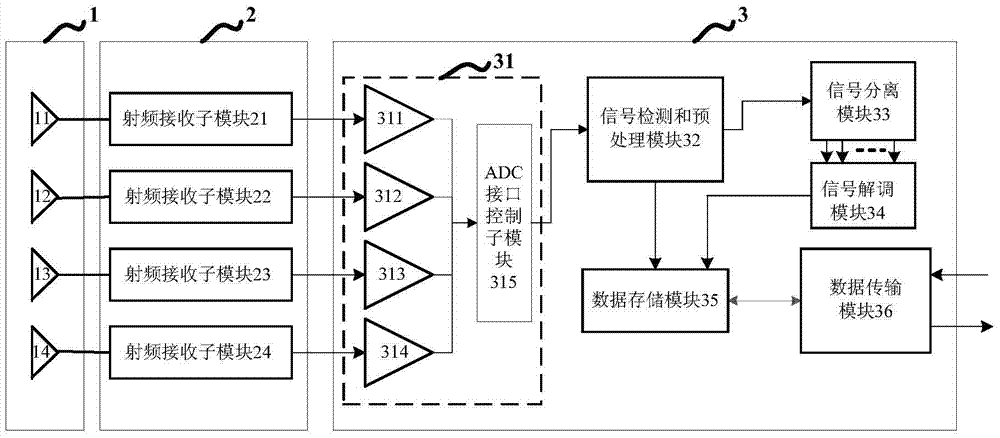Multi-antenna space-based AIC receiver
A multi-antenna and receiver technology, which is applied in the field of satellite communication, can solve the problems of weak ability to solve time slot collision and high requirement of carrier-to-interference ratio, and achieve the effect of reducing the complexity of implementation
- Summary
- Abstract
- Description
- Claims
- Application Information
AI Technical Summary
Problems solved by technology
Method used
Image
Examples
Embodiment 1
[0038] A multi-antenna space-based AIS receiver includes an antenna array 1, a radio frequency front end 2 and a digital processing unit 3 arranged in sequence.
[0039] Described antenna array 1 comprises the monopole antenna of four quarter wavelengths in parallel, is respectively the first monopole antenna 11, the second monopole antenna 12, the third monopole antenna 13 and the fourth monopole antenna. The pole antenna 14 is used to receive the AIS signal transmitted by the marine ship.
[0040] The radio frequency front end 2 includes four parallel radio frequency receiving modules, which are respectively the first radio frequency receiving module 21, the second radio frequency receiving module 22, the third radio frequency receiving module 23 and the fourth radio frequency receiving module 24, and the four radio frequency receiving modules are respectively Correspondingly receive the AIS signals of four monopole antennas, amplify and filter them respectively, and down-co...
PUM
 Login to View More
Login to View More Abstract
Description
Claims
Application Information
 Login to View More
Login to View More - R&D
- Intellectual Property
- Life Sciences
- Materials
- Tech Scout
- Unparalleled Data Quality
- Higher Quality Content
- 60% Fewer Hallucinations
Browse by: Latest US Patents, China's latest patents, Technical Efficacy Thesaurus, Application Domain, Technology Topic, Popular Technical Reports.
© 2025 PatSnap. All rights reserved.Legal|Privacy policy|Modern Slavery Act Transparency Statement|Sitemap|About US| Contact US: help@patsnap.com



